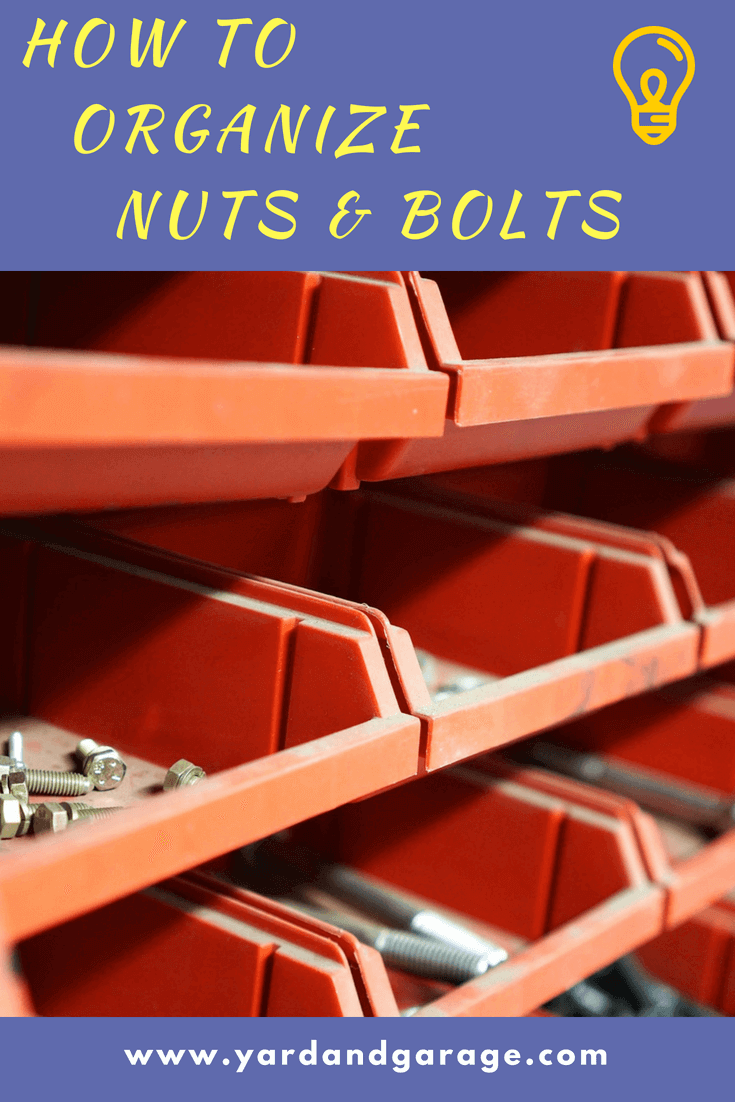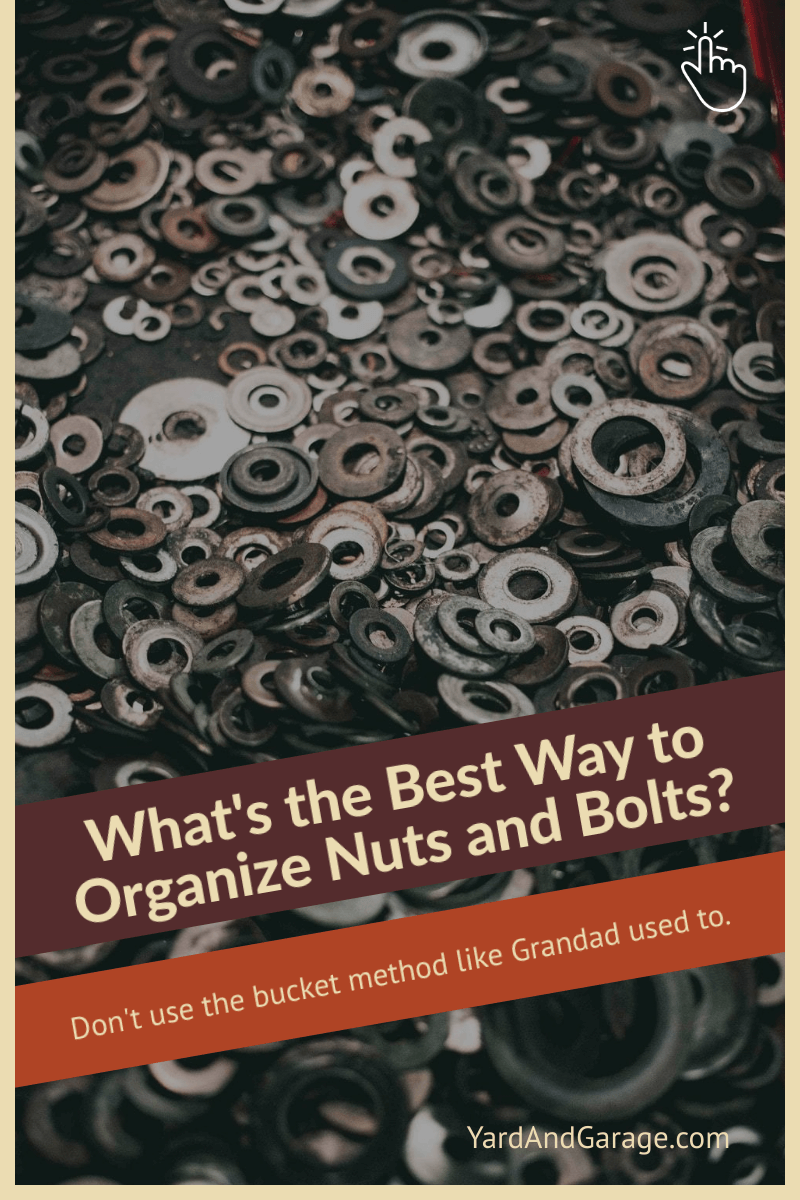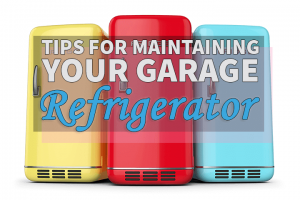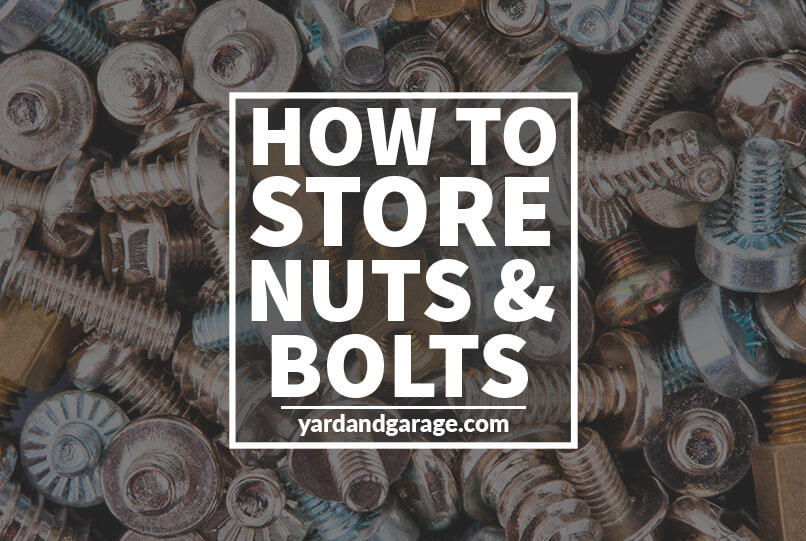
When it comes to organizing nuts and bolts in your shop, having a reliable storage system is critical. Proper storage helps keep your workspace neat, and most importantly, it allows you to find the parts you need quickly and easily. There are a variety of nut bolt storage solutions available, so it’s essential to find the best fit for your shop.
In this post, we’ll explore some essential nut and bolt storage solutions as well as tips to help keep your shop organized, clean, and efficient, while utilizing all your available store space.
I think some people hate working on home projects because they know it will be stressful finding all the right tools and small parts like screws. That’s a shame.
Get your garage organized by starting with the smallest things in it: your nuts, bolts, screws, and nail collection.
Table of Contents
What should the nuts and bolts storage solutions provide?
Let’s come up with a few ground rules on what you need from the storage solution before you build or buy one.
I think for any home garage organizational system to be used, it needs to be:
Readily Available
You don’t want to have to special order something from Germany just to clean up the parts in your garage. It must be available at places like Home Depot, Wal-Mart, Amazon.
Efficient
Whatever storage method you use for your nuts and bolts it should be easy to use. You must be able to quickly find the part you need and get back to work.
Reasonably Priced
I don’t think you need to spend a lot of money on this. There are pricey metal drawer organizers that professional shops use, but we are just average homeowners.
$50 or less for the whole solution sounds about right.
How Not to Store Nuts and Bolts
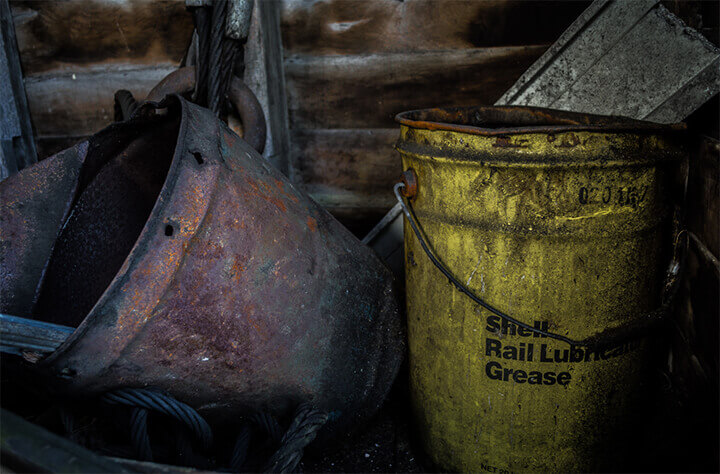
It is really easy to set aside a bucket in the garage and toss any spare parts you have on hand into it. Oh, sure, one day you will get that organized.
Maybe you inherited one of these from your granddad. They tend to get passed on from generation to generation.
Don’t store your small parts this way. For one thing, it is painful and inefficient to root around in a bucket full of nails. And if you need a part desperately enough you will have to dump out the bucket and look through the whole thing!
Another reason not to do this is that any water that gets in the bucket will sit there and ruin your parts. You’ll end up tossing a good bit of money out in the end.
Essential Nut Bolt Storage Solutions for Your Shop
Plastic Drawer Parts Bin
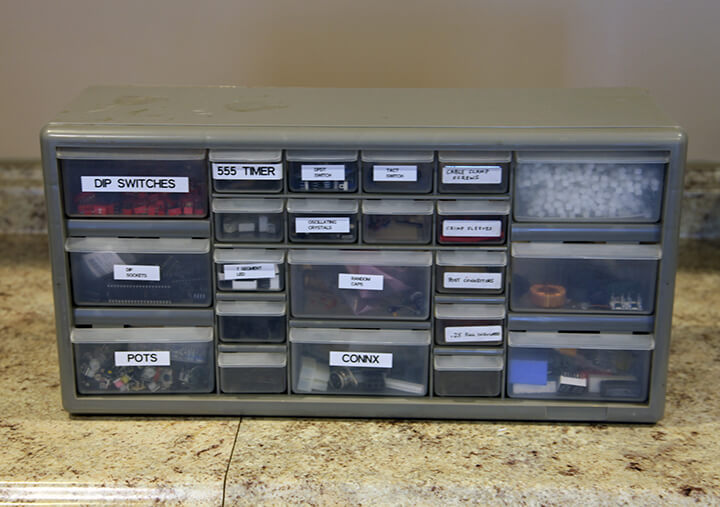
Ahh, now we are talking. These drawer bins meet all three of our criteria we set above.
You can identify nuts and bolts right away
Get the kind with clear drawers. That way you can exactly see what’s in there and zero in on the part you need. Don’t paint or tape over them or you will end up playing ‘Let’s Make a Deal’ while you look for a screw.
If you want to get crazy, you can buy a label maker and identify each drawer with the exact part name and size. For example:
- Hex bolt: Zinc #10 3/4″ x 2″
- #13 x 2″ Finishing Nails
It’s easy to get at the parts
The drawers have a little tab that stops them from coming out all the way, but you can tilt them up to remove them. This feature allows you set the tray down next to your project if you need a lot of them
Doesn’t take up too much room
The average size units with ~20 drawers measure 18″ L x 9″ H x 6″ D so you can set up a few across your workbench.
You can even stack them if you secure them together well enough.
Plastic storage drawer cons
There are a couple of negatives I have found with these plastic bins.
- You can’t have an individual drawer for every part.
- They aren’t easy to move around.
You won’t be able to use these for all of your tiny parts. There are way too many variations for the number of drawers you can fit on your bench.
For some things, you might get away with keeping similar parts in a single large drawer. For example, all wingnuts go in one drawer no matter the size.
Also, I wouldn’t recommend trying to move these bins around. I’ve tried it, and of course, all the drawers open up and the screws and nuts flew out. A good version is the Akro-Mils 24-drawer organizer shown above (check price on Amazon). You can choose from 5 drawer configurations to get larger/smaller drawers.
For portability, I suggest something else.
Plastic trays
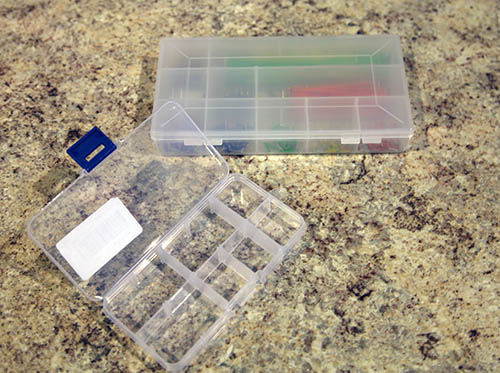
Clear plastic parts trays are handy when you need to work on something away from your workbench.
They come in all sorts of sizes, but I find the ones around 6″ long work best. I can stick a couple of those in my toolbox and go.
The version shown on the right are Duofire trays, they come in a pack of 4. They come in different colors so don’t worry about the pink. Click here to check the latest price on Amazon.
When using the clear plastic trays to hold your parts, I would suggest:
Keep like items together
Try to put similar items together in one tray. For example, put all your screws in one container, separated out by size. This method makes it easy to find what you’re looking for.
Use them for parts in small quantities
Don’t waste a drawer space in your large standing plastic bin for parts that you only have a couple of. Create a “miscellaneous” tray and put all the weird bits and bobs in it.
Get the kind with removable tabs
If you buy a storage box with the permanent sections, you will end up frustrated. Those sections are usually around 1″ in size, so they will make the trays useless for longer bolts or screws.
Plastic tray cons
If you just pick a random tray at the store, it can be hit or miss whether they are pieces of junk or not.
I’ve found the worst offenders are easy to break. Something about the plastic they use makes them very brittle.
Also, some crappy versions have tabs that won’t stay locked.
There is another portable storage method for bolts and nuts that I have used. It’s the old family tacklebox.
Using a Tackle Box as a Nuts and Bolts Organizer
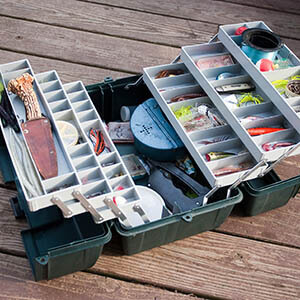 Tackle boxes can be used to store your nuts and bolts, and are especially useful when you need to work away from your garage.
Tackle boxes can be used to store your nuts and bolts, and are especially useful when you need to work away from your garage.
There are so many variations of tackle boxes that you can find so try to find one with these features:
- Removable tray tabs to allow longer sized parts.
- Telescoping trays so you can find your nuts and bolts quicker.
The thing about tackle boxes is that they are kind of related to your personality. I wouldn’t presume to recommend one for you. You probably have a couple laying around the garage as it is.
If you need one, Amazon has over 9,000 tackleboxes on their site. Here are a few of the bestselling tackle boxes on Amazon to help you narrow down your search.
Sorting Nuts, Bolts, and Screws: Tips for an Organized Workspace
If you’ve inherited a bucket of nuts and bolts and you are ready to get them organized, there’s no easy way to get around it. This process will take time, and it can get frustrating.
To get through it as quickly and painlessly as you can I would go about it like this:
Break it up
Don’t try to sort a whole 5-gallon bucket in one sitting. Break it up into smaller batches that you can finish in about an hour or so.
You can do this task during your favorite TV show. This job is also perfect for kids. It will help them learn about the different parts and how to estimate sizes quickly. They can also earn a few bucks while doing it.
Have these items ready before you start sorting:
- Small batch of parts. About a coffee can size.
- Paper and pen
- Temporary storage containers
- White paper or posterboard
- Measuring tape
- “Known” sized nuts and bolts for reference
Temporary parts storage
Set up some holding trays, lids, or jars that you can temporarily store parts you are organizing. Have some post-it notes and a pen ready to label them as the parts come in.
Dump the screw pile
Lay down some white or light-colored paper on your coffee table. Don’t use newspaper as the nuts and bolts will blend in with the color.
Dump the pile onto the paper and start sorting.
Use screws and nuts that you already know the size of to use as a reference for the corresponding fasteners while going through the pile.
I like to start with what I can see a lot of. For example, if I find quite a few similar sized washers, I’ll measure one, write down the size on a post-it note and start putting all the same parts in the container with the note.
Eventually, you will get down to the one-offs and weird parts. I go ahead and stick those in the “miscellaneous” plastic tray where they will live from now on.
If you break this task up into multiple batches, it will help you stay focused and not get discouraged. Don’t try to do it all at once.
Final Thoughts
Maintaining an organized and efficient workspace is of utmost importance in any home workshop, and having a proper place for every nut and bolt is a crucial part of it.
The key takeaway here is to pick sturdy and functional storage systems, sort your hardware by type and size, and continuously review and update your inventory. Combining these tips with cost-effective delivery and shipping options will not only save you time and frustration but will also free up valuable space in your home workshop.
I hope this guide has given you a little hope that you can get your small parts under control. Everyone can get organized if they put a little effort into it.
I do think the plastic drawer bins are the best way to organize nuts and bolts. I use them in my garage and my home office and they work great.
Good luck with your garage!
Pinterest Image:
